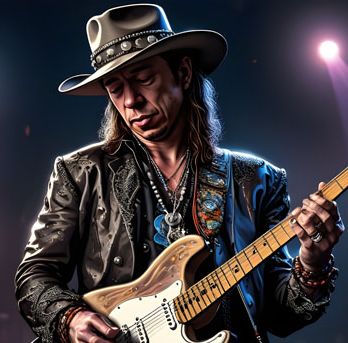Music Genres Guide and Family Trees
click the bars on the chart above for more info and interactive timeline of all music genres from to 1940 to 2025
All Music Genres
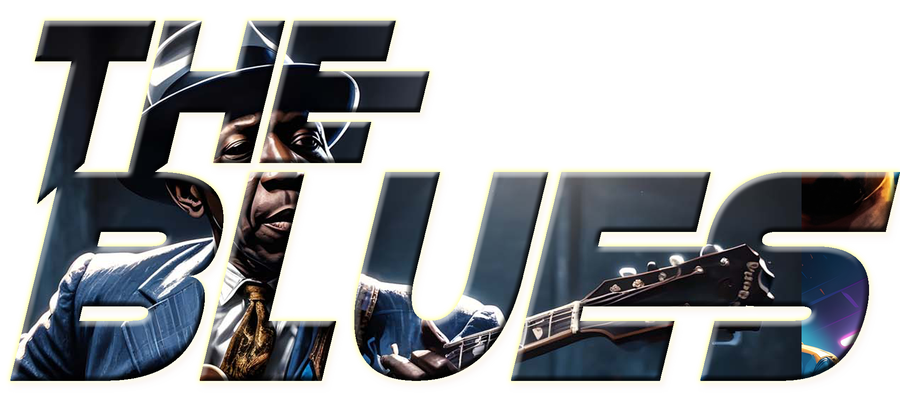
Country Blues
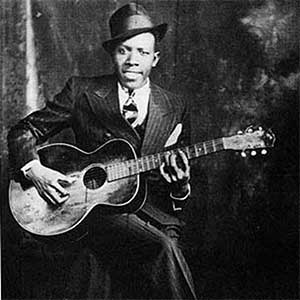
A raw, acoustic form of blues that originated in the rural South.
Bands: Robert Johnson, Son House.
Delta Blues
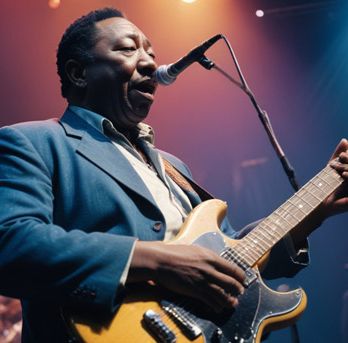
Originated in the Mississippi Delta, characterized by emotional intensity and slide guitar.
Bands: Charley Patton, Muddy Waters.
Piedmont Blues
Known for its ragtime-based fingerpicking guitar style.
Bands: Blind Willie McTell, Rev. Gary Davis.
Blues (electric)
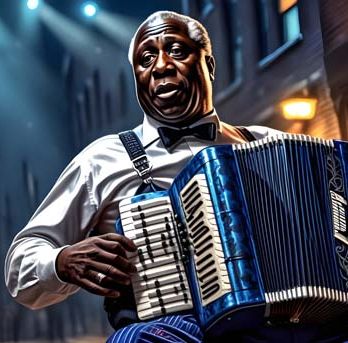
Blues is a music genre and musical form which was originated in the Deep South of the United States around the 1870s by African Americans from roots in African musical traditions, African-American work songs, and spirituals.
Bands: Leadbelly, Robert Johnson, Bessie Smith
Chicago Blues
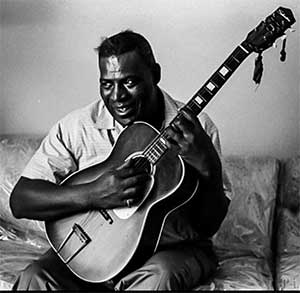
Urban blues style featuring electric guitar and harmonica, evolved in Chicago.
Bands: Howlin' Wolf, Willie Dixon.
West Coast Blues
A smoother, jazz-influenced style that emerged in California.
Bands: T-Bone Walker, Charles Brown
Electric Blues
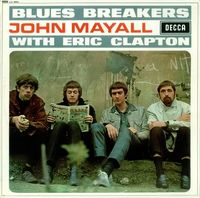
Blues amplified with electric instruments, blending traditional blues with rock elements.
Bands: B.B. King, Buddy Guy
Blues Rock
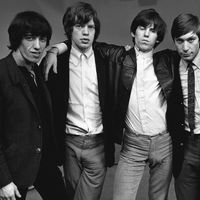
A hybrid of blues and rock, which brought blues to a wider audience.
Bands: Eric Clapton, The Rolling Stones.
1980s Revival
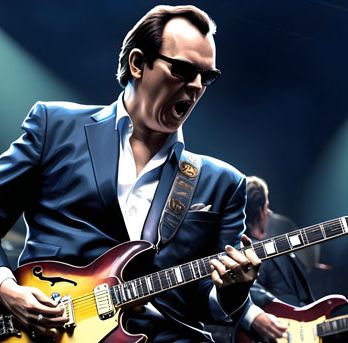
A resurgence of blues interest, focusing on both new and traditional styles.
Bands: Joe Bonamassa, Beth Hart, Derek Trucks.
Contemporary Blues
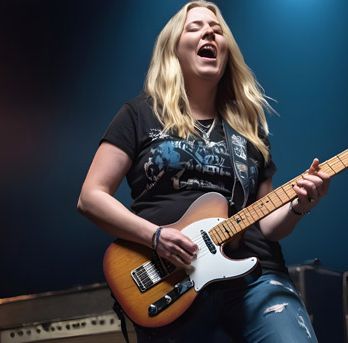
Modern blues artists infusing new energy and styles into traditional blues.
Bands: Joanne Shaw Taylor Samantha Fish, Larkin Poe, Ally Venable

Country & Western

Country and Western (C&W) music is a genre of popular music that combines elements of traditional country music and Western music. The term "Country and Western" was often used together in the past to describe the broader spectrum of music that emerged in the rural American South and West.
The term Country and Western was widely used from the 1930s to the 1960s but has since largely been replaced by the simpler country music. Western influences, particularly cowboy songs and cowgirl ballads, were significant in the genre's early days, but over time, it became dominated by the "country" side of the genre.
Early Country
Rooted in folk and Appalachian music, characterized by simple melodies and instruments like the fiddle and banjo.
Bands: The Carter Family, Jimmie Rodgers.
Cowboy
Romanticized the American West with artists like Gene Autry and Hank Williams.
Bands: Gene Autry, Hank Williams, Bob Wills
Western Swing
A dance-oriented country style blending jazz, swing, and country, popularized by Bob Wills.
Bands: Gene Autry, Hank Williams, Bob Wills
Country

Country music is a genre of American popular music that originated in the rural regions of the Southern United States in the 1920s. It takes its roots from genres such as folk music (especially Appalachian folk and Western music) and blues.
Bands: Johnny Cash, Dolly Parton, Loretta Lynn
Bluegrass
Fast-paced, acoustic style led by Bill Monroe, Lester Flatt, and Earl Scruggs.
Bands: Bill Monroe, Lester Flatt, and Earl Scruggs
Rockabilly
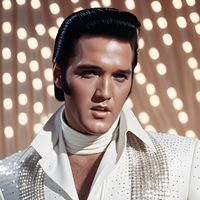
Fusion of rock and country, pioneered by Sam Phillips with stars like Elvis Presley and Johnny Cash.
Bands: Elvis Presley and Johnny Cash
Nashville Sound
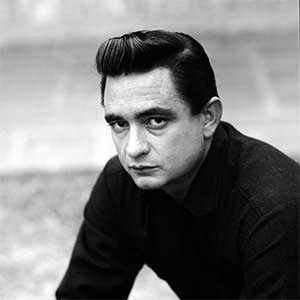
Polished production style making country mainstream, featuring Patsy Cline and Jim Reeves.
Bands: Neil Diamond, Elvis, Johnny Cash, Patsy Cline, Jim Reeves Glen Campbell
Folk

Folk music includes traditional music that has been passed through generations by oral tradition and modern music that follows the traditions of folk in instruments and composition. It often emphasizes acoustic instrumentation and meaningful lyrics.
Bands: Joan Baez, Peter Paul and Mary, Joni Mitchell (1960's period)
Outlaw Country
Reaction against Nashville's polished sound, emphasizing raw, authentic lyrics and styles.
Bands: Willie Nelson, Waylon Jennings
Progressive country
Progressive country is a term used variously to describe a movement, radio format or subgenre of country music which developed in the late 1960s and early 1970s as a reaction against the slick, pop-oriented Nashville sound. Emmylou Harris was called the founding mother of progressive country and Americana. The Byrds' Sweetheart of the Rodeo is considered a seminal progressive country album.
Bands: the Marshall Tucker Band, the Flying Burrito Brothers, the Charlie Daniels Band Kenny Chesney
Country Pop
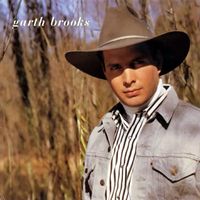
Blending country with pop elements, leading to crossover success.
Bands: Garth Brooks, Shania Twain, George Strait.
see also Garth Brooks albums discography
see also Shania Twain albums discography
Neo-Traditional
A return to traditional country sounds with modern production
Bands: The Desert Rose Band, The Mavericks, Alabama Tim McGraw
Modern Country
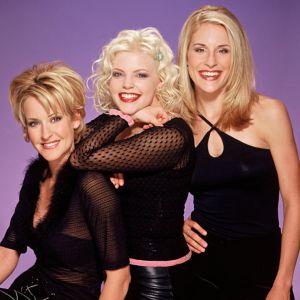
Incorporates elements from rock, pop, and hip-hop.
Bands: Carrie Underwood, Taylor Swift, Luke Bryan, Dixie Chicks
Alternative country
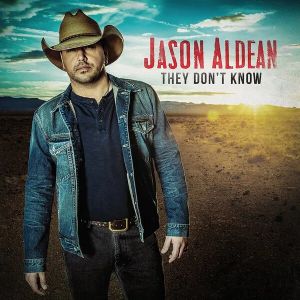
Alternative country (commonly abbreviated to alt-country; also known as alternative country rock, insurgent country, Americana, or y'allternative is a loosely defined subgenre of country music and/or country rock that includes acts that differ significantly in style from mainstream country music
Bands: Miranda Lambert Lady A, Florida Georgia Line, Jason Aldean. Wilco, Son Volt and Bottle Rockets
Christian country
sometimes marketed as country gospel, gospel country, positive country or inspirational country) is music that is written to express either personal or a communal belief regarding Christian life
Bands: Oak Ridge Boys, Mercy River Boys, The Cook Family Singers, Red Sovine, The Louvin Brothers and The Carter Family
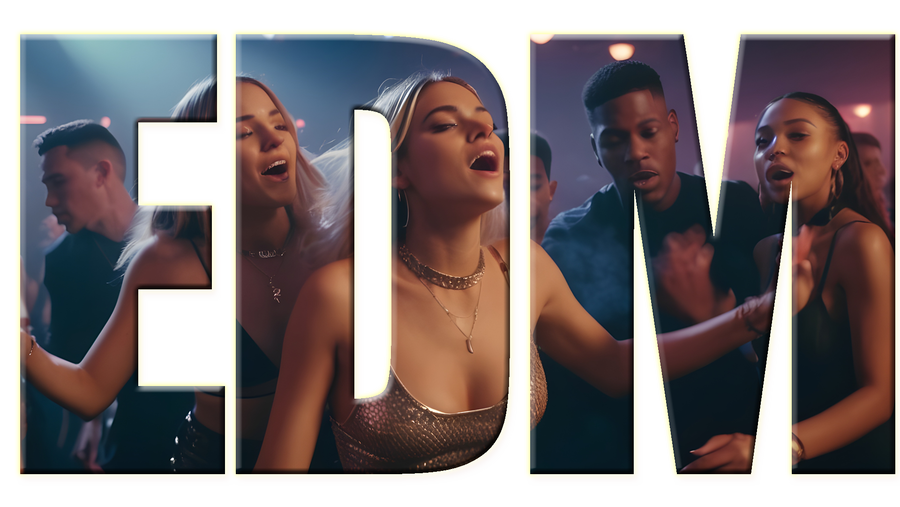
Industrial
A genre that fuses elements of electronic music with rock and avant-garde aesthetics, known for its harsh, robotic, mechanical, or noisy sound.
Bands: Nine Inch Nails, Ministry, Front 242
EDM (electronic dance music)
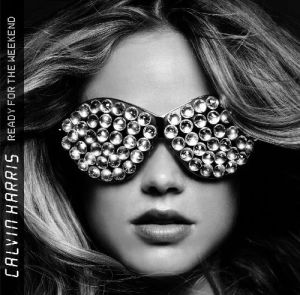
EDM, or Electronic Dance Music, is a broad range of percussive electronic music genres made largely for nightclubs, raves, and festivals. Developed in the late 1980s, it is characterized by its use of synthesizers, drum machines, and digital audio workstations. The music is generally built around a repetitive beat and often features build-ups and drops to enhance the dance experience. EDM encompasses a variety of styles including house, techno, dubstep, and trance, appealing to a global audience with its energetic and synthesized sounds.
Bands: Calvin Harris, David Guetta, Skrillex, Avicii, The Chemical Brothers
Garage House
Garage house is a genre of electronic dance music that emerged in the early 1980s in the United States. It is characterized by a soulful, rhythm-focused sound that combines elements of house music with gospel-inspired vocals and piano riffs. The genre was popularized in clubs that catered to African-American and gay communities, and is named after the Paradise Garage club in New York.
Bands: Todd Edwards, Tuff Jam, Kerri Chandler
House
Features a repetitive 4/4 beat, a tempo of 120 to 130 BPM, and often includes piano, synth, or vocal elements.
Bands: Frankie Knuckles, Marshall Jefferson, Swedish House Mafia
Techno
A genre of electronic dance music characterized by a repetitive four on the floor beat and a tempo of 120 to 150 beats per minute.
Bands: Carl Cox, Jeff Mills, Richie Hawtin
Acid House
A subgenre of house music developed around the mid-1980s by DJs from Chicago. The defining feature is the squelchy sounds of the Roland TB-303 electronic synthesizer-sequencer.
Bands: Phuture, Larry Heard, DJ Pierre
Ambient House
A subgenre of house music that blends elements of ambient music with traditional house. The music typically features lush soundscapes and smooth beats.
Bands: The Orb, KLF, Moby
Hardcore
Known for its very fast tempo (often above 170 BPM), aggressive themes, and heavy use of sampling.
Bands: Scooter, Angerfist, DJ Paul Elstak
Jungle
A genre of electronic music that incorporates fast-paced breakbeats and heavy basslines, derived from old school hardcore with influences from reggae and dancehall.
Bands: Shy FX, Goldie, Roni Size
Trance
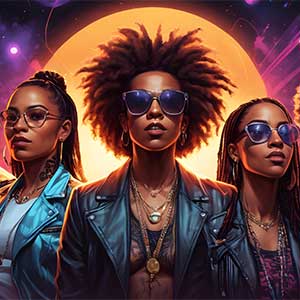
Trance music is known for its ability to draw listeners into a hypnotic state with its complex layers of melody, build-ups, and drops.
Bands: Tiesto, Armin van Buuren, Paul van Dyk, The Cool
Garage
Also known as UK garage or UKG, it is distinguished by its shuffling hi-hats, syncopated rhythmic patterns, and typically features pitch-shifted vocal samples.
Bands: MJ Cole, Todd Edwards, The Artful Dodger
Emo (Electronic)
Typically, emo refers to a rock music genre. However, electronic emo has emerged as a fusion of emo's lyrical style with electronic music.
Bands: Owl City (in its early work), The Postal Service
Drum and Bass
Evolved from jungle, drum and bass features fast breakbeats (typically 160 - 180 BPM) with heavy bass and sub-bass lines.
Bands: Andy C, LTJ Bukem, Pendulum
Big Beat

Characterized by heavy breakbeats and synthesizer-generated loops and patterns common to techno and acid house.
Bands: The Chemical Brothers, Fatboy Slim, The Prodigy
see also Fatboy Slim albums
Psytrance
A style of trance characterized by arrangements of synthetic rhythms and complex layered melodies created by high tempo riffs.
Bands: Infected Mushroom, Vini Vici, Astrix
Hardstyle
Characterized by hard beats and synthesized melodies
Bands: Headhunterz, Wildstylez, Brennan Heart
Dubstep
Characterized by sparse, syncopated rhythmic patterns with prominent sub-bass frequencies.
Bands: Skrillex, Benga, Burial
Grime
Originating from East London, grime features rapid breakbeats, electronic sounds, and often involves rapid, syncopated rhyming.
Bands: Wiley, Dizzee Rascal, Stormzy
EDM Trap
Incorporates elements from the Southern trap music genre into a typical EDM framework. It's known for its use of thin, high-pitched lead synthesizers, atmospheric synths, and 808 kick drums.
Bands: Baauer, Flosstradamus, RL Grime
Future Bass
Known for its use of a wide range of pitch-bent sounds.
Bands: Flume, San Holo, Marshmello
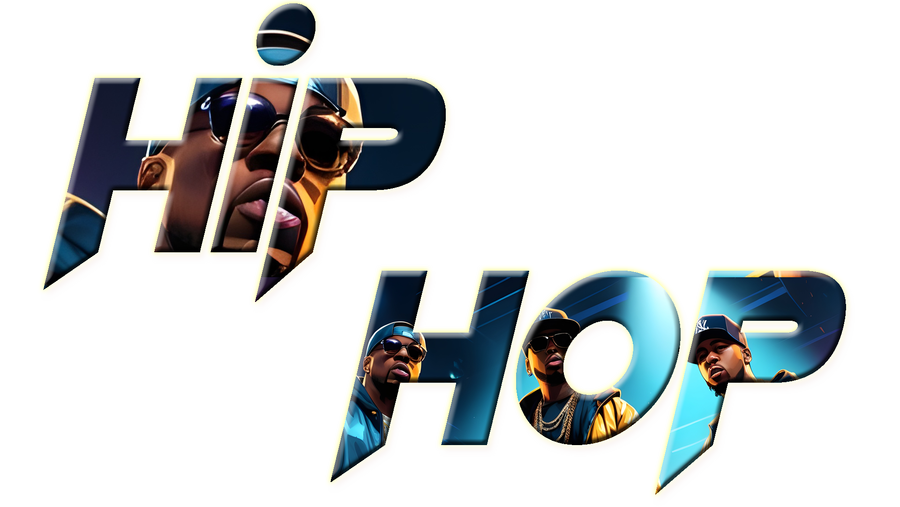
Old School Hip Hop
The early period of hip hop, characterized by its raw and simple beats, and playful, party-oriented lyrics.
Bands: DJ Kool Herc, Grandmaster Flash, Sugarhill Gang.
Hip Hop
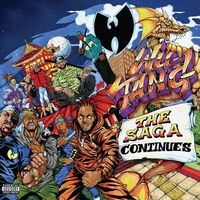
Hip hop music, also known as rap music, is a genre of popular music developed in the United States by inner-city African Americans and Latino Americans in the Bronx borough of New York City in the 1970s. It consists of stylized rhythmic music that commonly accompanies rapping, a rhythmic and rhyming speech that is chanted.
Bands: Run DMC, Wu tang Clan, Tupac Shakur, Ice-T
see also Wu-Tang Clan albums discography
Old School Rap

Old School Rap refers to the first hip-hop styles that originated from the East Coast of the USA in the late 1970s and early 1980s. It is characterized by relatively simple raps and beats compared to later developments in the genre.
Bands: Public Enemy, Sugarhill Gang, Kurtis Blow, Afrika Bambaata
Golden Age Hip Hop
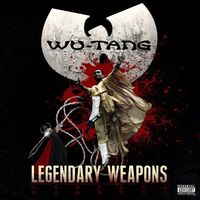
A period marked by diversity, innovation, and the emergence of complex lyrics addressing social issues.
East Coast Hip Hop
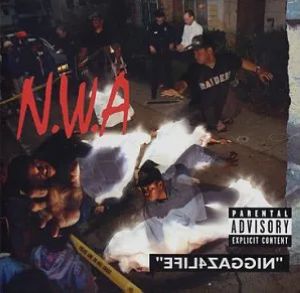
Known for its complex lyrics and intricate wordplay, often with a gritty, street-oriented sound.
Bands: Nas, Jay-Z, Wu-Tang Clan.
West Coast Hip Hop
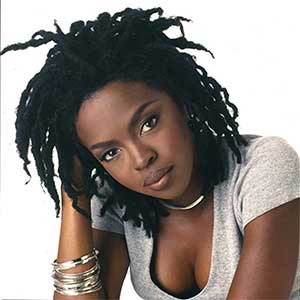
Features funk-influenced beats and laid-back flows, often associated with the G-funk sound.
Bands: Dr Dre, Snoop Dogg, Ice Cube. Lauryn Hill
Alternative Hip Hop
Emphasizes innovative sounds and lyrical content, often diverging from mainstream themes.
Bands: De La Soul, The Roots, Kid Cudi.
Gangsta Rap
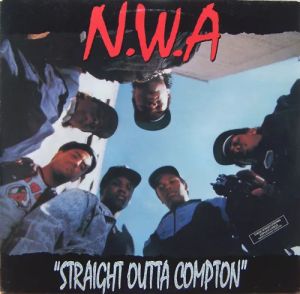
Focused on the violent lifestyle and harsh realities of inner-city life, often controversial for its explicit content.
Bands: NWA., Tupac Shakur, The Notorious B.I.G. (Biggie Smalls)
Southern Hip Hop
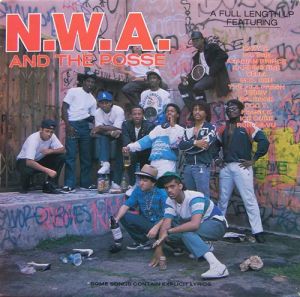
Includes sub-genres like crunk, trap, and bounce, known for its energetic beats and catchy hooks.
Bands: OutKast, Lil Wayne, T.I.
Hip Hop 2000

Hip Hop 2000 represents the era of hip hop that came into prominence in the early 2000s, featuring more polished productions and incorporating elements from pop and electronic music. Artists like Kanye West and Jay-Z are prominent figures from this era.
Bands: Eminem, Kanye West, Jay-Z, Snoop Dogg
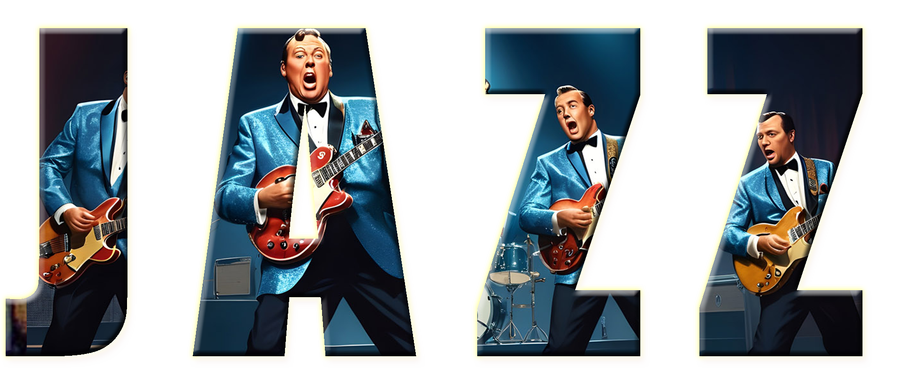
Jazz
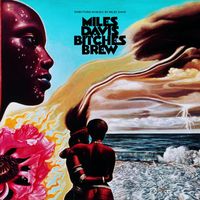
Jazz is a music genre that originated in the African-American communities of New Orleans, United States, in the late 19th and early 20th centuries. It is known for its swing and blue notes, complex chords, call and response vocals, polyrhythms and improvisation.
Bands: Duke Ellington, Louis Armstrong, Charlie Parker, John Coltrane, Freddie Hubbard, Bill Evans
Jazz Fusion
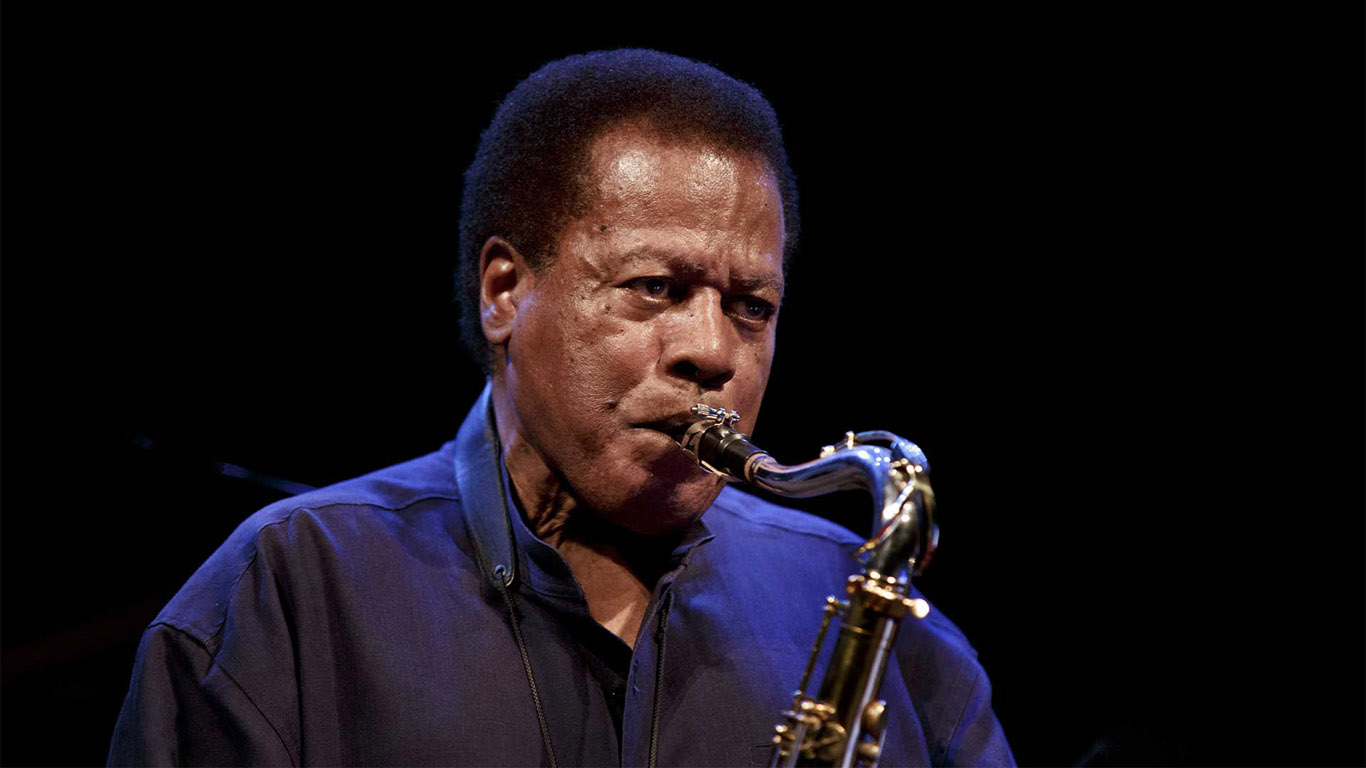
Jazz fusion is a musical genre that developed in the late 1960s when musicians combined aspects of jazz harmony and improvisation with styles such as funk, rock, blues, and Latin jazz. It is characterized by a mixture of complex rhythms and time signatures.
Bands: Weather Report which featured three legendary musicians Joe Zawinul, Wayne Shorter and Jaco Pastorius
Herbie Hancock's Headhunters
Jazz Rock
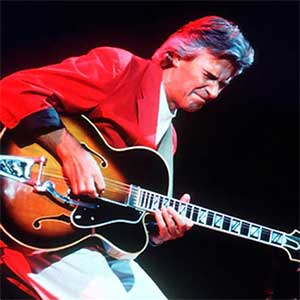
Jazz rock is a genre of music that blends jazz improvisation and harmony with the forms and techniques of rock music, and often rock's strong backbeat. Notable bands include Steely Dan and Blood, Sweat & Tears
Bands: Mahavishnu Orchestra (featuring John McLaughlin), Blood Sweat and Tears
Smooth Jazz
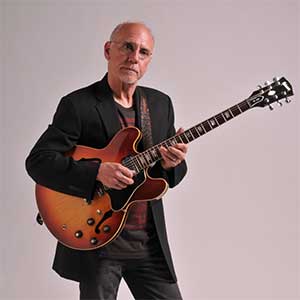
Smooth jazz is a genre of music that emerged in the 1970s, blending jazz influences with pop and R&B. It is characterized by its downtempo melodies that are meant to be more palatable and accessible than other forms of jazz
Bands: Earl Klugh, Larry Carlton, Kenny G
Acid Jazz

Acid jazz combines elements of jazz, soul, funk, and disco. Originating in the mid-1980s in London, it is known for its looped beats and vibrant incorporation of jazz samples, particularly drawn from music of the 1960s and 1970s
Bands: The Brand New Heavies, Incognito, James Taylor Quartet, Us3, and Jamiroquai and Benny Sutton from the UK, and Guru, Buckshot LeFonque and Digable Planets from the U.S.

Metal
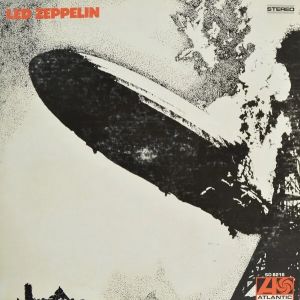
Metal, or heavy metal, is a genre of rock music characterized by its thick, massive sound, complex structures, and loudness. The genre's roots are in blues rock, psychedelic rock, and acid rock, and it typically employs heavy use of distorted electric guitars, bass guitar, drums, and often aggressive vocals.
Bands: Led Zeppelin (featuring Jimmy Page) , Black Sabbath (featuring Tony Iommi) and Deep Purple (featuring Ritchie Blackmore)
Heavy Metal
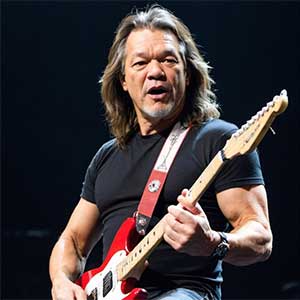
Heavy metal is a louder, more aggressive genre of rock music that developed in the late 1960s and early 1970s, primarily in the United Kingdom and the United States. With roots in blues rock and psychedelic rock, the bands that created heavy metal developed a thick, powerful sound, characterized by highly amplified distortion and extended guitar solos.
Bands: Alice Cooper, Kiss, Aerosmith and Eddie Van Halen
Glam Metal
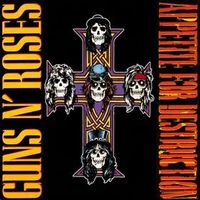
Glam metal, also known as hair metal, combines the flashy looks of glam rock with the heavy sound of metal. Popular in the 1980s, bands like Mötley Crüe and Poison characterized the genre by their use of makeup, teased hair, and theatrical antics.
Bands: Bon Jovi, Motley Crue, Guns N' Roses and Poison
see also Guns N' Roses albums discography
Thrash Metal
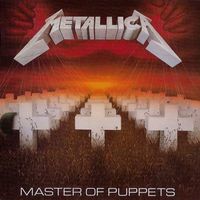
Thrash metal is an extreme subgenre of heavy metal characterized by its fast tempo and aggression. Thrash blends the speed and malice of hardcore punk with the technical guitar solos of heavy metal. It emerged in the early 1980s with bands like Metallica and Slayer.
Bands: Metallica, Slayer, Megadeth and Anthrax
Groove Metal
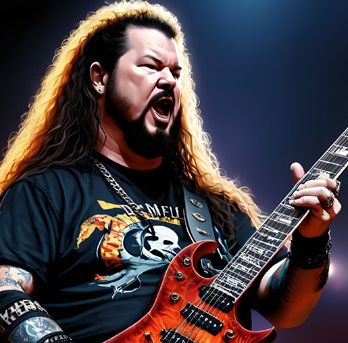
Groove metal is a subgenre of heavy metal that takes the intensity and sonic weight of traditional heavy metal and infuses it with a more pronounced rhythmic swing, often reminiscent of hardcore punk or thrash metal. Bands like Pantera and Lamb of God are notable examples.
Bands: Pantera (featuring Dimebag Darrell) White Zombie, Machine Head, and Sepultura. Successful groove metal acts of the 2000s include Lamb of God, DevilDriver, and Five Finger Death Punch
Death Metal
This'll cheer you up! Death metal is an extreme subgenre of heavy metal music that uses heavily distorted guitars, deep growling vocals, blast beat drumming, and complex song structures. It emphasizes an aggressive, powerful sound with lyrical themes often revolving around violence, decay, and death.
Bands: Death, Cannibal Corpse, Obituary (you get the naming!)
Doom Metal
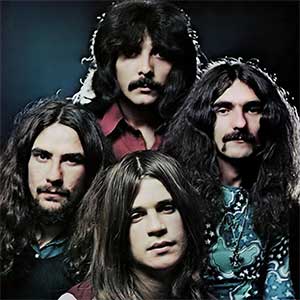
It's a downer! Doom metal is a form of heavy metal that alledgedly evokes a sense of impending doom in its music, which is typically slower and has thicker, heavier sound. Emphasis is on melancholy, despair, and grief with bands like Candlemass and Black Sabbath (in their early days).
Bands: Black Sabbath influenced Pentagram, Saint Vitus, Trouble and Candlemass have been referred to as "the Big Four of Doom Metal"
Nu Metal
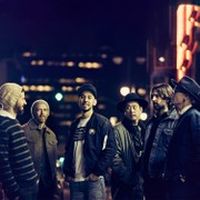
Nu Metal combines elements of metal music with other genres, including hip hop, industrial, grunge, and punk. It is characterized by its heavy guitar riffs, turntable scratches, and diverse vocal techniques. Bands like Linkin Park and Korn are key players in this genre.
Bands: Linkin Park, Limp Bizkit, Rammstein, Slipknot

Doo Wop
Doo Wop is a genre of rhythm and blues music that developed in African-American communities in the 1940s and achieved popularity in the 1950's and 1960's. It features vocal group harmony that carries an engaging melodic line to a simple beat with little or no instrumentation.
The classic doo-wop chord progression is a popular sequence that was used extensively in 1950s and early 1960s doo-wop music. It is typically structured as follows: I - VI - IV - V In the key of C major, this would translate to: C - A minor - F - G
Bands: The Five Satins, The Turbans, The Clovers
Pop
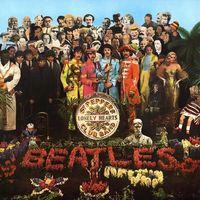
Pop music is a genre of popular music that originated in its modern form during the mid-1950s in the United States and the United Kingdom. The term generally refers to music that is accessible to the general audience, characterized by short to medium-length songs, catchy melodies, and a focus on mainstream appeal.
Bands: from The Beatles to Taylor Swift
see also Beatles albums discography
see also nsync singles and albums timelinex
Beat
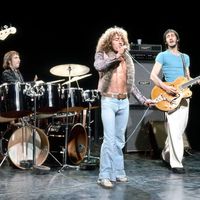
Often associated with the British Invasion bands of the 1960s, "Beat" music is characterized by its upbeat rhythm and blues style, harmonica sounds, and strong backbeat. The Beatles were its most famous proponents.
Bands: The Beatles, The Easybeats, The Who
Surf Music
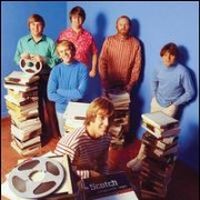
Surf music is a subgenre of rock music associated with surf culture, particularly as found in Southern California. It was especially popular from 1962 to 1964 in two major forms: surf rock (instrumental, emphasizing guitar styles) and surf pop (including vocal groups like The Beach Boys).
Bands: Dick Dale, The Beach Boys /p>
Brit Invasion

The British Invasion refers to the period in the 1960s when rock and pop music acts from the United Kingdom, including The Beatles, The Rolling Stones, and The Who, became popular in the United States, significantly impacting American music and culture.
Bands: The Beatles, The Rolling Stones, The Who, The Kinks
New Wave
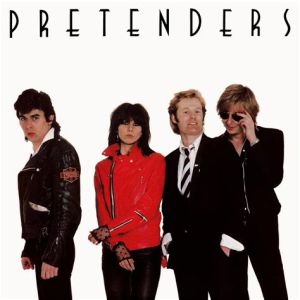
New Wave originated from the late 1970s to the mid-1980s as a genre that encompassed numerous pop-oriented music styles influenced by punk rock's intensity yet more approachable and complex. It often featured synthesizers over traditional rock instruments and was exemplified by artists like Talking Heads and The Cars.
Bands: Talking Heads, Blondie, The Pretenders, Depeche Mode
New Romantics
The New Romantics were a music and fashion movement that emerged in the late 1970's and early 1980's in the UK. Musically, it was part of the new wave movement but distinguished by its emphasis on flamboyant, eccentric fashion and romantic, synthesizer-heavy music. Bands such as Duran Duran, Spandau Ballet, and Visage typified the style, blending glamour with pop sensibilities.
Bands: Duran Duran, Spandau Ballet, and Visage
Goth
Goth, or gothic rock, is a music genre that emerged from the post-punk scene in the late 1970s. It is known for its dark, melancholic, and introspective qualities with lyrical themes focusing on existential despair, decadence, and the macabre. Instrumentally, it often includes echoing guitar, somber bass lines, and deep vocals. Pioneering bands include Bauhaus, The Cure, and Siouxsie and the Banshees.
Bands: The Cure, Joy Division
Indie Pop
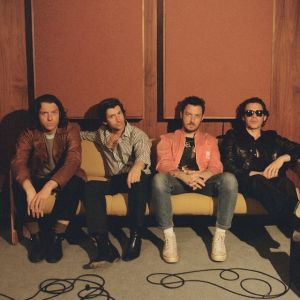
Indie pop is a genre of alternative rock that originated in the 1980s. Defined by its independence from major commercial record labels and its eclectic sound, indie rock embraces a range of styles from jangly pop to noisy punk. It is characterized by its DIY ethic, diverse approaches to music, and a preference for artistic expression over mainstream marketability. Notable bands include The Smiths, Pavement, and Arctic Monkeys
Bands: The Smiths, Pavement, and Arctic Monkeys
New Age
New Age music is a genre of music intended to create artistic inspiration, relaxation, and optimism. It is used by listeners for yoga, massage, meditation, and reading as a method of stress management or to create a peaceful atmosphere in their home or other environments.
Bands: Enya, Enigma
Britpop
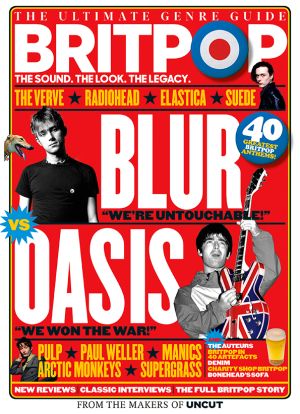
Britpop is a British music movement in the mid-1990's known for its catchy tunes that draw extensively on British pop music of the 1960s and 1970s. Bands like Oasis, Blur, and Pulp led the movement, which was characterized by its emphasis on British culture and identity.
Trip Hop
Trip hop is a music genre that originated in the early 1990s in the UK, particularly Bristol. It is characterized by its use of hip hop beats, but with a slower tempo, and often incorporating elements of jazz, soul, and funk.
Bands: Massive Attack, Gorillaz, Portishead
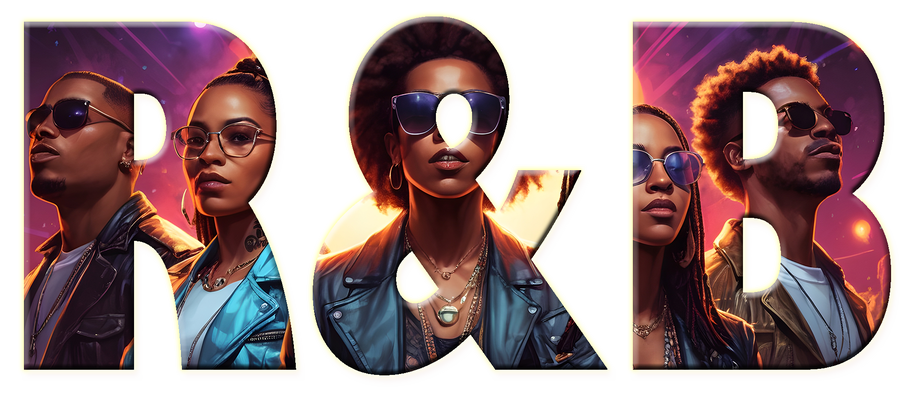
Rhythm & Blues

R&B is a catchall term referring to any music that was made by and for black Americans Robert Palmer
Jerry Wexler of Billboard magazine is credited with coining the term "rhythm and blues" as a musical term in the United States in 1948
Bands: B.B. King, Muddy Waters, Chuck Berry
Stax
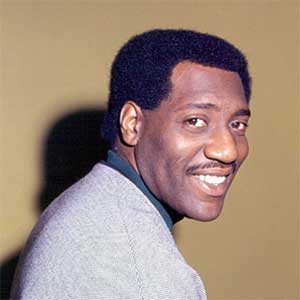
Stax was influential in the creation of Southern soul and Memphis soul music. Stax also released gospel, funk, and blues recordings. Renowned for its output of Blues music, the label was founded by two siblings and business partners, Jim Stewart and Estelle Axton
Bands: Otis Redding, Sam and Dave, The Bar K's, and house band Booker T and the MGs
Soul
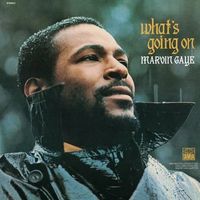
Soul music is a popular music genre that originated in the African American community in the late 1950's and early 1960's in the USA, combining elements of African-American gospel music, rhythm and blues, and Jazz. Soul is known for its depth of feeling and emotive style, highlighted in the work of artists like Aretha Franklin and James Brown.
Bands: Ray Charles, Sam Cooke, Aretha Franklin, Marvin Gaye, and Otis Redding
Motown
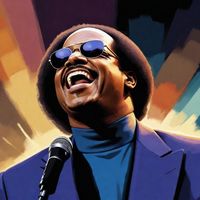
Motown is an American record label originally from Detroit now owned by the Universal Music Group. It was founded by Berry Gordy Jr. as Tamla Records on January 12, 1959
Bands: Smokey Robinson, Stevie Wonder, Marvin Gaye
Philly
Philadelphia soul, sometimes called Philly soul, the Philadelphia sound, Phillysound, or The Sound of Philadelphia (TSOP), is a genre of late 1960s/1970's soul music characterized by funk influences and lush string and horn arrangements. The genre laid the groundwork for the emergence of disco later in the 1970s by fusing the R&B rhythm sections of the 1960s with the pop vocal tradition and featuring a more pronounced jazz influence in its melodic structures and arrangements.
Bands: The O'Jays, Harold Melvin & the Blue Notes, MFSB (Mother Father Sister Brother)
Funk
Funk is a music genre that originated in African-American communities in the mid-1960s when musicians created a rhythmic, danceable new form of music
to play the funk you gotta be 'on the one' Verdine White talking about emphasis about the first beat of the bar
Bands: James Brown, Sly and the Family Stone, Parliament, Earth Wind and Fire
Disco
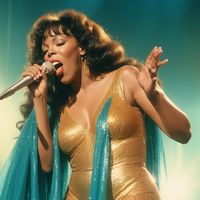
Disco is a genre of dance music that emerged in the 1970s from the urban nightlife scene of the United States. It is characterized by a steady four-on-the-floor beat, smooth bass lines, strings, horns, and electric piano. Disco's music typically features lush production values, complex arrangements, and an emphasis on danceability. The genre was popularized by iconic tracks such as "Stayin' Alive" by the Bee Gees and "I Will Survive" by Gloria Gaynor, and it played a major role in the development of modern club culture.
Bands: Donna Summer Chic
Contemporary R&B

Contemporary R&B blends traditional R&B with pop, hip-hop, and electronic music. It features smooth production, synthesized sounds, and a focus on romantic and emotional themes. The genre continues to evolve with the incorporation of new musical styles.
Bands: Whitney Houston, Usher, Beyonce, and Alicia Keys
Neo Soul
Neo Soul is a subgenre of R&B that emerged in the mid-1990's. It combines the soulful sounds of classic R&B and soul with contemporary elements of hip-hop, jazz, funk, and electronic music. Neo Soul is characterized by its rich, emotional vocal performances, complex melodies, and thought-provoking lyrics often centered around love, relationships, and social issues. The genre places a strong emphasis on artistic authenticity and often features live instrumentation. Its organic and eclectic approach has made it a refreshing alternative to the more commercial sounds of mainstream R&B and hip-hop.
Bands: Erykah Badu, D'Angelo, and Jill Scott
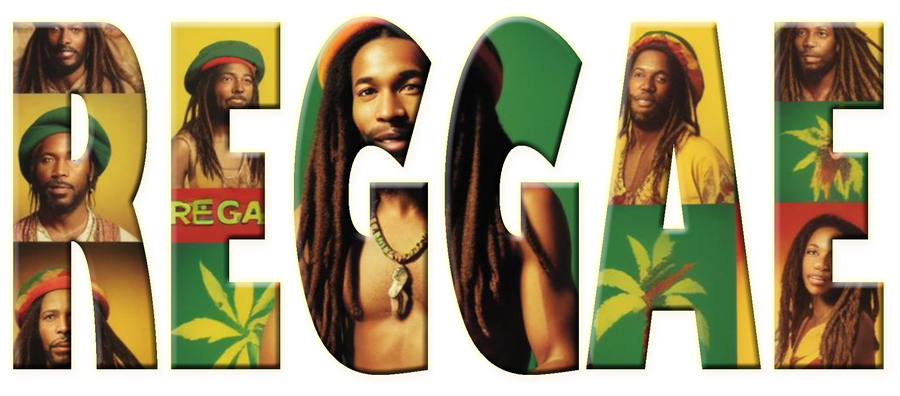
Ska
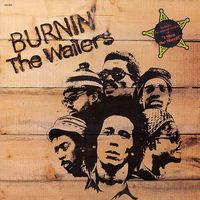
Ska a music genre that originated in Jamaica in the late 1950s and was the precursor to rocksteady and reggae. It combined elements of Caribbean mento and calypso with American jazz and rhythm and blues.
Bands: Prince Buster, Skatalites, Desmond Dekker
Rocksteady
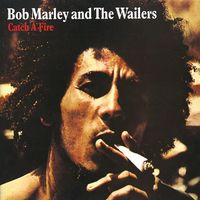
Rocksteady is a music genre that originated in Jamaica around 1966.[1] A successor of ska and a precursor to reggae, rocksteady was the dominant style of music in Jamaica for nearly two years, performed by many of the artists who helped establish reggae
Bands: the Techniques, the Paragons, the Heptones and the Gaylads
Roots Reggae
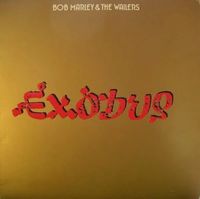
Roots reggae is a subgenre of reggae that deals with the everyday lives and aspirations of Africans and those in the African Diaspora, including the spiritual side of Rastafari, black liberation, revolution and the honouring of God, called Jah by Rastafarians.
Bands: The Abyssinians, Johnny Clarke, Cornell Campbell, Bob Marley, Peter Tosh, Burning Spear, Dennis Brown, Max Romeo
Reggae
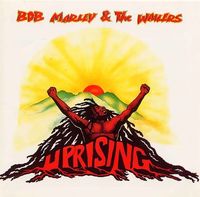
Reggae is a music genre that originated in Jamaica in the late 1960s. The term also denotes the modern popular music of Jamaica and its diaspora.[1] A 1968 single by Toots and the Maytals, "Do the Reggay", was the first popular song to use the word reggae, effectively. naming the genre and introducing it to a global audience. Reggae is deeply linked to Rastafari, an Afrocentric religion
Bands: Bob Marley and the Wailers, Toots and the Maytals Sly Dunbar
see also Bob Marley albums discography
Dub
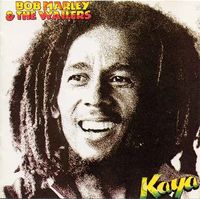
Dub is an electronic musical style that grew out of reggae in the late 1960s and early 1970s.
Bands: U-Roy, King Tubby, Lee Perry, Keith Hudson
Lovers Rock
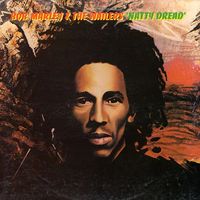
Lovers rock is a style of reggae music noted for its romantic sound and content. While love songs had been an important part of reggae since the late 1960s, the style was given a greater focus and a name in London in the mid-1970s.
Bands: Ken Boothe, Johnny Nash
Ragga
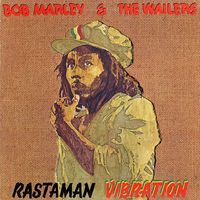
ragga is a subgenre of dancehall and reggae music. The instrumentals primarily consist of electronic music with heavy use of sampling.
Bands: Wayne Smith, Daddy Freddy and Asher D
Reggaeton
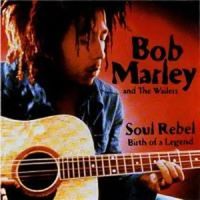
Reggaeton is a modern style of popular music that originated in Puerto Rico during the late 1990s.
Bands: LIT killah, Tiago PZK, Duki, Emilia, and Maria Becerra

Skiffle
Skiffle is a music genre with Jazz, Blues, and folk influences, typically using homemade or improvised instruments like the washboard. It originated in the United States in the early 20th century but became popular in the UK in the 1950's, notably influencing The Beatles.
Bands: Lonny Donnegan
Rock & Roll
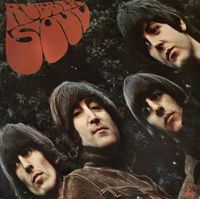
Rock & roll is a genre of popular music that originated and evolved in the United States during the late 1940s and early 1950s, primarily from a combination of African American blues, country, jazz, and gospel music. Its beat is characterized by a simple, usually repetitive structure which is most often focused on the rhythms.
Bands: Bill Haley, Elvis Presley, Jerry Lee Lewis, Little Richard
Rockabilly
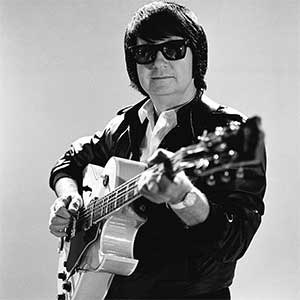
Rockabilly blends rock and roll and hillbilly music, dating back to the early 1950s in the United States. It is characterized by its upbeat tempos, simple chords, and lyrical focus on teenage life. Key artists include Elvis Presley and Johnny Cash.
Bands: Carl Perkins, Roy Orbison, Wanda Jackson
Classic Rock
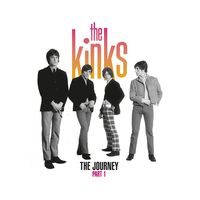
Classic rock is a radio format which developed from the album-oriented rock (AOR) formats in the early 1980s. In the United States, this rock music format now features a large playlist of songs ranging from the 1960s, 1970s, and 1980s, focusing on the commercially successful rock music of that era.
Psychedelic Rock
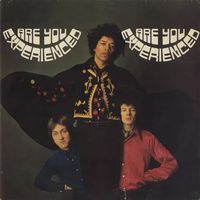
Psychedelic rock is a style of rock music that is inspired or influenced by psychedelic culture and attempts to replicate and enhance the mind-altering experiences of psychedelic drugs. It emerged during the mid-1960s, and was pioneered by bands like Pink Floyd and the Grateful Dead.
Bands: Jimi Hendrix, Jefferson Airplane
Country Rock
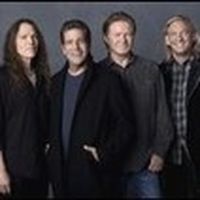
Country rock is a genre that fuses the elements of rock and country music. It was developed by rock musicians who began to record country-flavored records in the late-1960s and early-1970's. These musicians recorded rock records using country themes, vocal styles, and additional instrumentation, most characteristically pedal steel guitars.
Bands: The Eagles, New Riders of the Purple Sage, Linda Ronstadt, and the Byrds
Prog Rock
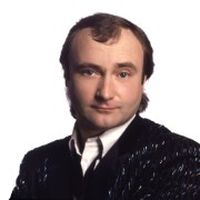
Progressive rock, or prog rock, is a broad genre of rock music that developed in the United Kingdom and United States throughout the mid to late 1960s. It is characterized by complex song structures, sophisticated instrumentation and often incorporates elements from classical, jazz and other musical genres.
Southern Rock
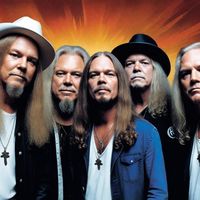
Southern rock is a subgenre of rock music and a genre of Americana. It developed in the Southern United States from rock and roll, country music, and blues, and is focused generally on electric guitar and vocals.
Bands: lynyrd skynyrd, Little Feat
Glam Rock

Glam rock is a style of rock music that developed in the United Kingdom in the early 1970s performed by musicians who wore outrageous costumes, makeup, and hairstyles, particularly platform shoes and glitter. David Bowie and Marc Bolan of T. Rex are most commonly associated with this movement.
Bands: David Bowie, Elton John, Mott the Hoople, Sweet, Slade, Mud, Roxy Music
Yacht Rock

Yacht rock refers to the highly polished brand of soft rock that emanated from Southern California during the late 1970s and early 1980's. The term describes a smooth musical style made by artists such as Michael McDonald, Kenny Loggins, and Toto.
Bands: Steely Dan, Boz Scaggs
Stadium Rock

Stadium rock is a genre of rock music that is designed to be played to large audiences in arenas and stadiums. It includes anthemic, highly melodic choruses, and notable hooks, with a focus on straightforward, driving rhythms and instrumentation. Bands like Queen and U2 exemplify this style.
Bands: Toto, Styx, Journey, REO Speedwagon and Boston, Guns N' Roses
Punk Rock
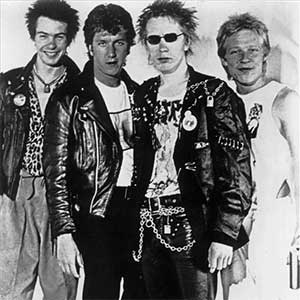
Punk rock is a music genre that originated in the mid-1970s, primarily in the United States, United Kingdom, and Australia. Characterized by its fast tempos, short songs, minimal instrumentation, and often political and anti-establishment lyrics, punk rock was a reaction against the perceived excesses of mainstream 1970s rock. Bands like The Ramones, Sex Pistols, and The Clash are pioneers of the genre.
Bands: Sex Pistols, Ramones, The Clash, The Damned, Patti Smith, Iggy Pop
Indie Rock

Indie rock is a genre of rock music that originated in the 1980s as a part of the independent music underground. Rather than pursuing traditional commercial success, indie rock artists are often known for their quirky, unconventional sound and their emphasis on artistic expression.
Bands: Bloc Party, the Arctic Monkeys and the Killers
Alternative Rock
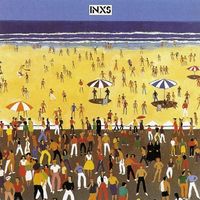
Alternative rock is a style of rock music that emerged from the independent music underground of the 1980s and became widely popular in the 1990s. The term "alternative" was used to describe punk rock-inspired bands that didn't fit into mainstream genres.
Bands: REM, Red Hot Chili Peppers, Pixies, Smashing Pumpkins, Snow Patrol, Radiohead, INXS
Hardcore Punk
Hardcore punk, often referred to simply as hardcore, is a punk rock music genre and subculture that originated in the late 1970s. Hardcore is generally faster, harder, and more aggressive than earlier punk rock.
Bands: Black Flag, Dead Kennedys
Grunge

Grungeis a rock music genre and subculture that emerged during the mid-1980s in the Pacific Northwest U.S. state of Washington, particularly in Seattle. Known for its distorted guitars, contrasting song dynamics, and raw, angsty lyrics, it was made famous by bands like Nirvana and Pearl Jam.
Bands: Nirvana, Foo Fighters , Alice in Chains, Pearl Jam
